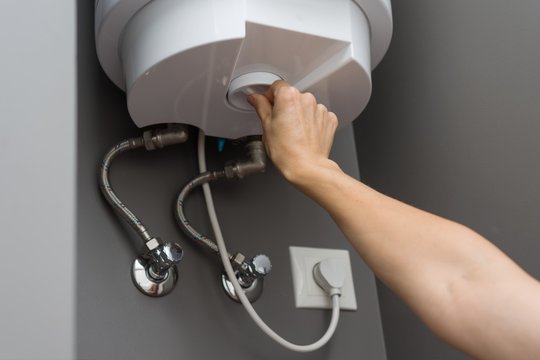How do you really feel in relation to How to Maintain a Hot Water Heater in a Few Simple Steps?

Hot water is crucial for day-to-day comfort, whether it's for a revitalizing shower or washing recipes. To ensure your warm water system runs efficiently and lasts much longer, regular upkeep is key. This post offers functional tips and understandings on just how to maintain your home's hot water system to stay clear of disruptions and expensive fixings.
Introduction
Preserving your home's hot water system could seem complicated, but with a few straightforward steps, you can guarantee it operates smoothly for many years to find. This overview covers everything from understanding your hot water system to DIY maintenance pointers and knowing when to contact specialist aid.
Significance of Keeping Your Hot Water System
Normal maintenance not only prolongs the life-span of your warm water system but also guarantees it operates effectively. Disregarding maintenance can result in reduced efficiency, greater power costs, and also premature failing of the system.
Signs Your Warm Water System Needs Maintenance
Understanding when your warm water system requires focus can protect against major concerns. Keep an eye out for indicators such as irregular water temperature level, strange noises from the heater, or rusty water.
Recognizing Your Warm Water System
Prior to diving right into upkeep jobs, it's handy to recognize the basic components of your hot water system. Generally, this includes the water heater itself, pipes, anode rods, and temperature controls.
Monthly Maintenance Tasks
Regular monthly checks can aid capture small problems prior to they rise.
Purging the Water Heater
Flushing your water heater removes debris build-up, boosting performance and lengthening its life.
Monitoring and Replacing Anode Rods
Anode rods prevent deterioration inside the container. Evaluating and changing them when worn is important.
Examining and Adjusting Temperature Setups
Changing the temperature level settings ensures optimum efficiency and safety.
DIY Tips for Upkeep
You can do a number of maintenance jobs on your own to keep your warm water system in leading condition.
Looking for Leakages
On a regular basis check pipes and links for leaks, as these can lead to water damages and greater bills.
Examining Pressure Relief Valves
Examining the pressure safety valve ensures it works correctly and stops excessive stress accumulation.
Insulating Pipelines
Insulating warm water pipelines minimizes heat loss and can conserve energy.
When to Call a Specialist
While DIY maintenance is helpful, some issues require specialist knowledge.
Complex Problems Calling For Professional Assistance
Instances include significant leaks, electric problems, or if your water heater is regularly underperforming.
Regular Professional Upkeep Benefits
Expert upkeep can include complete evaluations, tune-ups, and making certain compliance with safety and security standards.
Final thought
Normal maintenance of your home's warm water system is essential for effectiveness, long life, and cost savings. By adhering to these tips and understanding when to look for professional assistance, you can make certain a dependable supply of warm water without unanticipated disruptions.
How to Maintain an Instant Hot Water Heater
- Before tinkering with your hot water heater, make sure that it’s not powered on. You also have to turn off the main circuit breaker and shut off the main gas line to prevent accidents. Also turn off the water valves connected to your unit to prevent water from flowing into and out of the appliance.
- 2. When you’re done, you have to detach the purge valves’ caps. These look like the letter “T” and are situated on either side of the water valves. Doing so will release any pressure that has accumulated inside the valves while at the same time avoid hot water from shooting out and burning your skin.
- 3. When the purge valves’ caps are removed, you have to connect your hosing lines to the valves. Your unit should have come with three hoses but if it didn’t, you can purchase these things from any hardware or home repair shops. You can also get them from retail stores that sell water heating systems. Read the user’s manual and follow it to complete this task properly. When the hosing lines are connected, open the purge port’s valves.
- 4. You should never use harsh chemical cleaners or solutions when cleaning your unit. Make use of white vinegar instead. It should be undiluted and you’ll probably use about 2 gallons.
- 5. Now flush your water heater. This task should probably take about 40 minutes. We can’t give you specific directions for this because the procedure is carried out depending on the type, model and brand of your heater. With that being said, refer to the user’s manual.
- 6. When you’re done draining the unit, you have to turn off the purge port valves again. Remove the hosing lines that you earlier installed on each of the water valves. Put the valve caps (purge port) back in their respective places and be very careful so as not to damage the rubber discs that are found inside these caps.
- 7. Now that everything’s back in place, check your user’s manual again to find out how to reactivate your water heating system.
- 8. Once it is working, turn one of your hot water faucets on just to let air pass through the heater’s water supply pipes. Leave the tap on until water flows smoothly out of it.
https://www.orrplumbing.com/blog/2014/september/how-to-maintain-an-instant-hot-water-heater/

As a devoted reader on Water Heater Maintenance Tips You Can't Afford to Forget, I was thinking sharing that piece of content was really helpful. Don't hesitate to take the opportunity to promote this article if you liked it. I thank you for reading our article about Tips on Maintaining a Water Heater.
Call Today
Comments on “Expert Advice on Caring for Your Home's Hot Water SystemEnsuring Durability of Your Home's Hot Water System: Maintenance AdviceHow to Successfully Care for Your Home's Hot Water System”